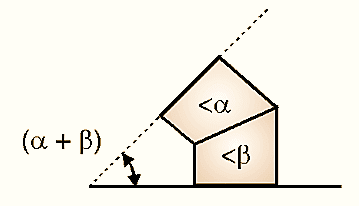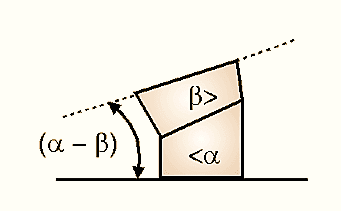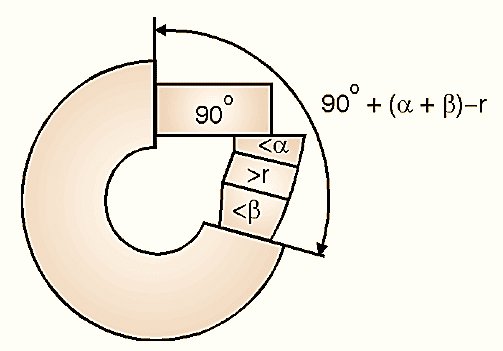
Figure 1: Angle Gauge.
Working Principle of Angle Gauges
Angle gauges are used as a standard for angle measurement/angle setting in workshops. They are made up of hardened steel blocks of about 75 mm long and 15 mm wide. The two surfaces, which make the angle are granted and lapped to high degree of accuracy. A set of angle gauges consists of 14 gauges in total including a 90º square block.
Sizes of gauges are :
1º, 3º, 9º, 27º, 41º Qty:5
1′, 3′, 9′, 27″ Qty:4
3″, 6″, 18″, 30″ Qty:4
Square block (90º) Qty:1
Thus, the total of 14 gauges.
The angle gauge is shown in Fig. 1. It has markings of angle size and direction of angle.
Addition of Angle Gauges and Subtraction of Angle Gauges

Figure 2: Addition of Angle Gauges.

Figure 3: Subtraction of Angle Gauges.
Angles can be added or subtracted by keeping them on one another as shown in Fig. 2 and Fig. 3. Note the position of marks (<) for addition and subtraction.
Use of Angle Gauges

Figure 4: Use of Angle Gauges (Less than 90º).

Figure 5: Use of Angle Gauges (Greater than 90º).
Angle gauges can be used for the measurement of angles of given jobs for less than 90º as shown in Fig. 4. Angle greater than 90º can be measured by using a square block as shown in Fig. 5. It is possible to set any angle to the nearest of 3″. These are similar to slip gauges, i.e., we can built up angle in combinations. Direct combination of all gauges given an angle upto 81º 40.9′ and more than this can be developed by using 90º square block.
Applications of Angle Gauge
Angle gauges can be used for :
- Built up of given angle (as a standard).
- Measuring angle between two surfaces by inserting in the surfaces (If less than 90º angle).
- Measuring of angle greater than 90º by using square black and other angle gauges.
Angle gauges can be calibrated using interferometry or slip gauges and sine bar combinations.
Difference between Angle Gauge and Slip Gauge
| Angle gauges | Slip gauges |
| These are standards for angles | These are standards for linear measurement. |
| These are having marks as positive and negative (or, <,>) | They do not have such marks. |
| These can be added or subtracted. | These can be added but not subtracted from each other. |
| Available in degrees, minutes and seconds. | Available in mm, inches. |
| Standard set consists of 14 gauges. | Standard set consists of 45, 83, 87, 110 etc. gauges. |